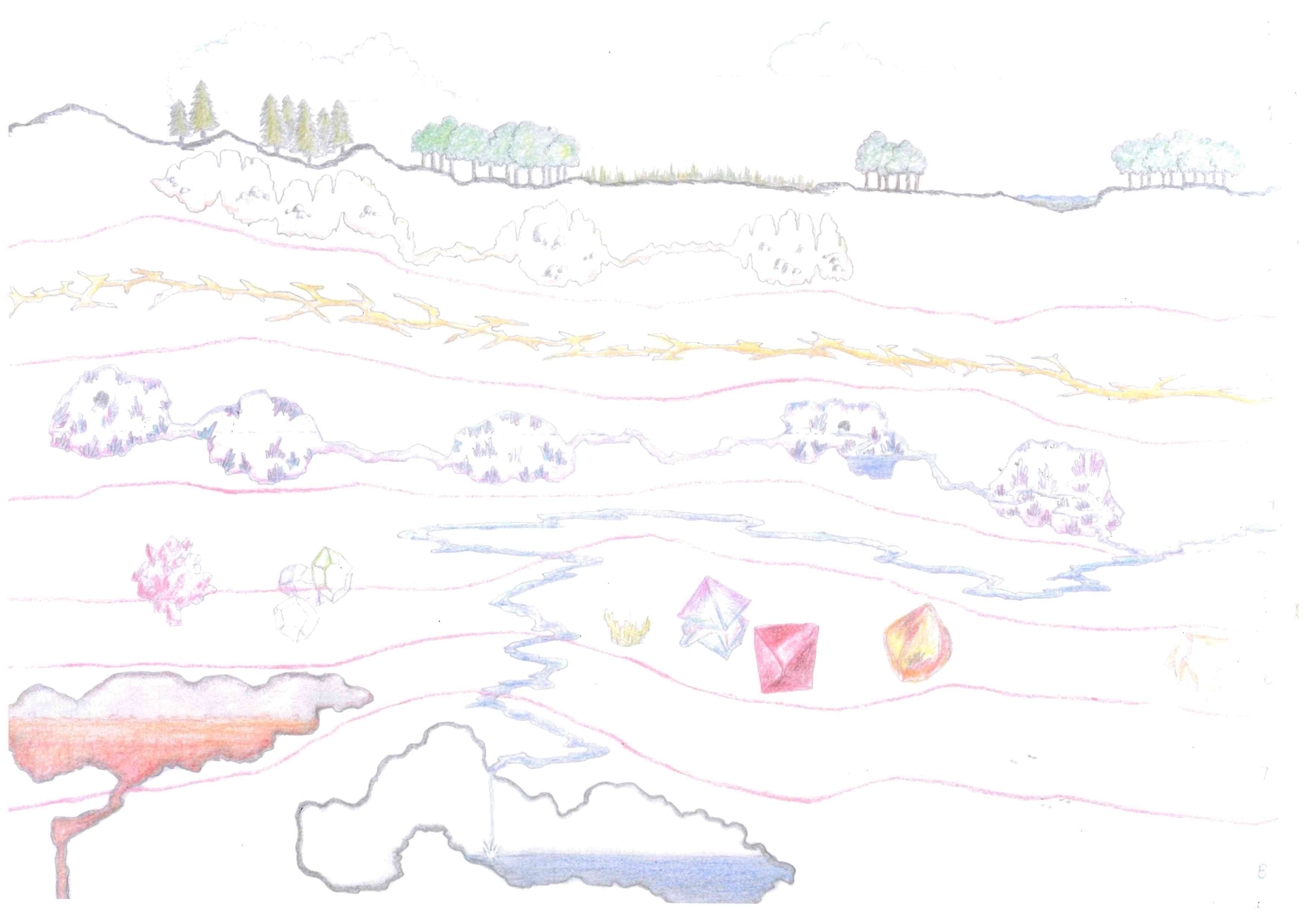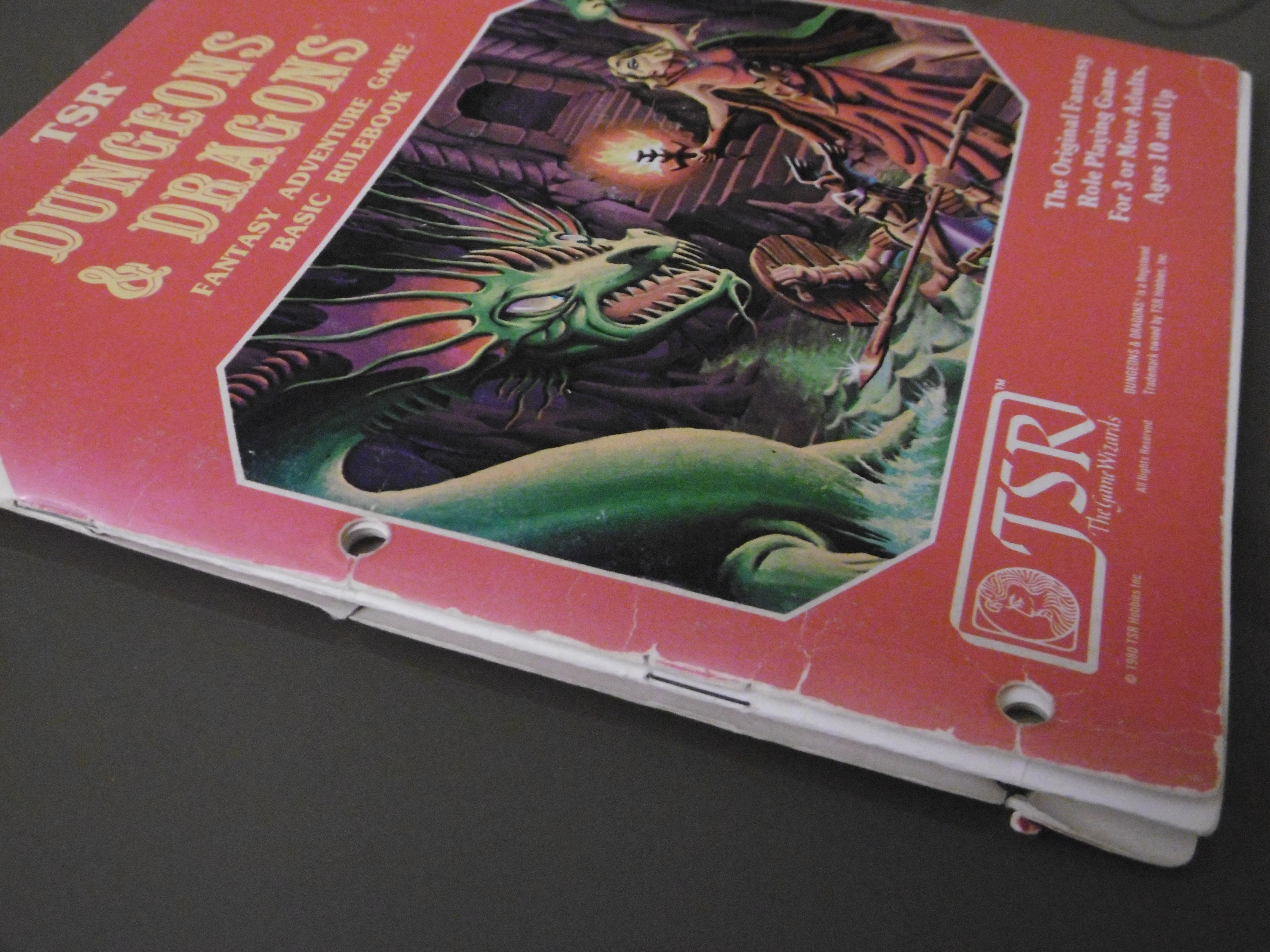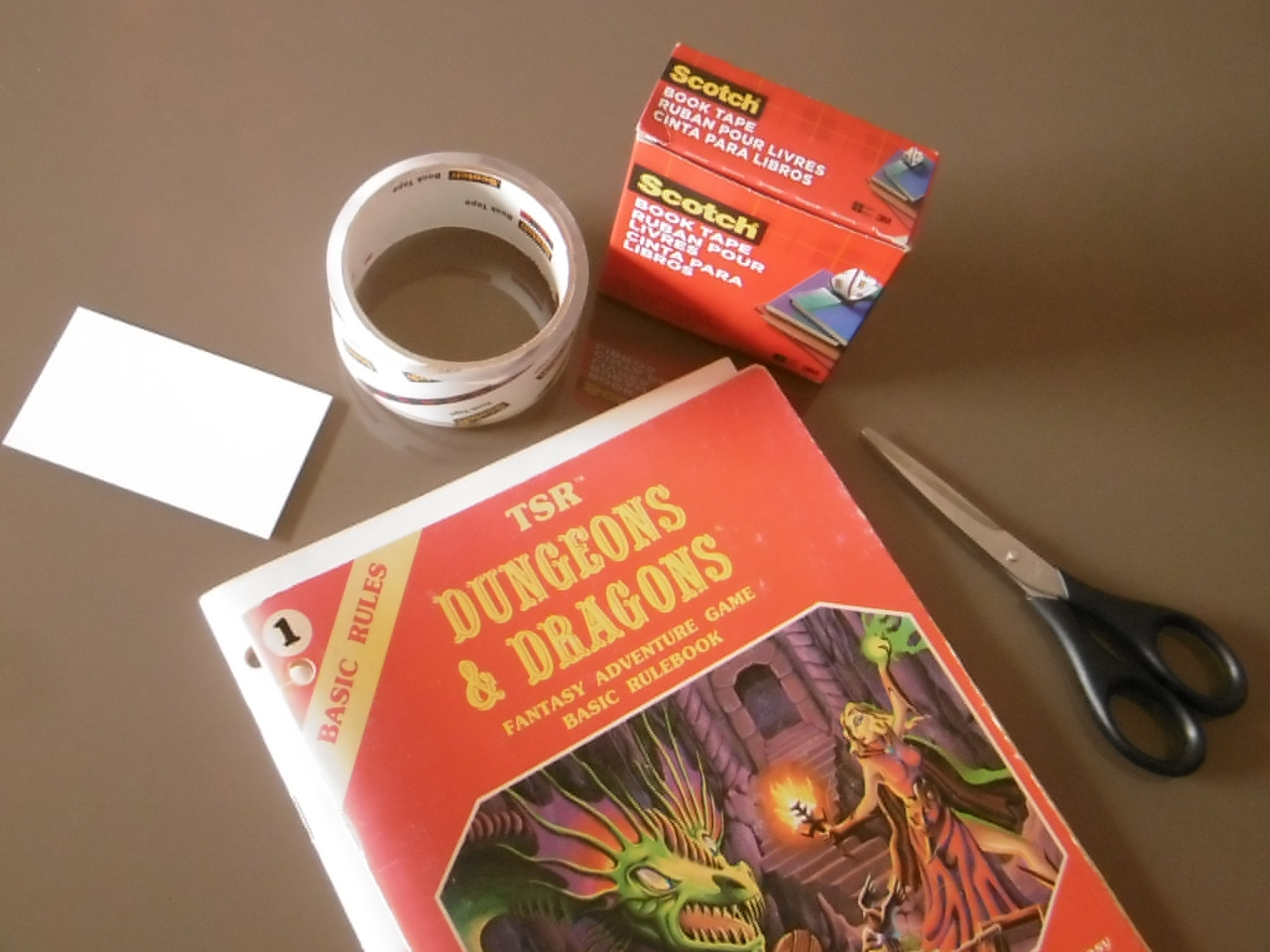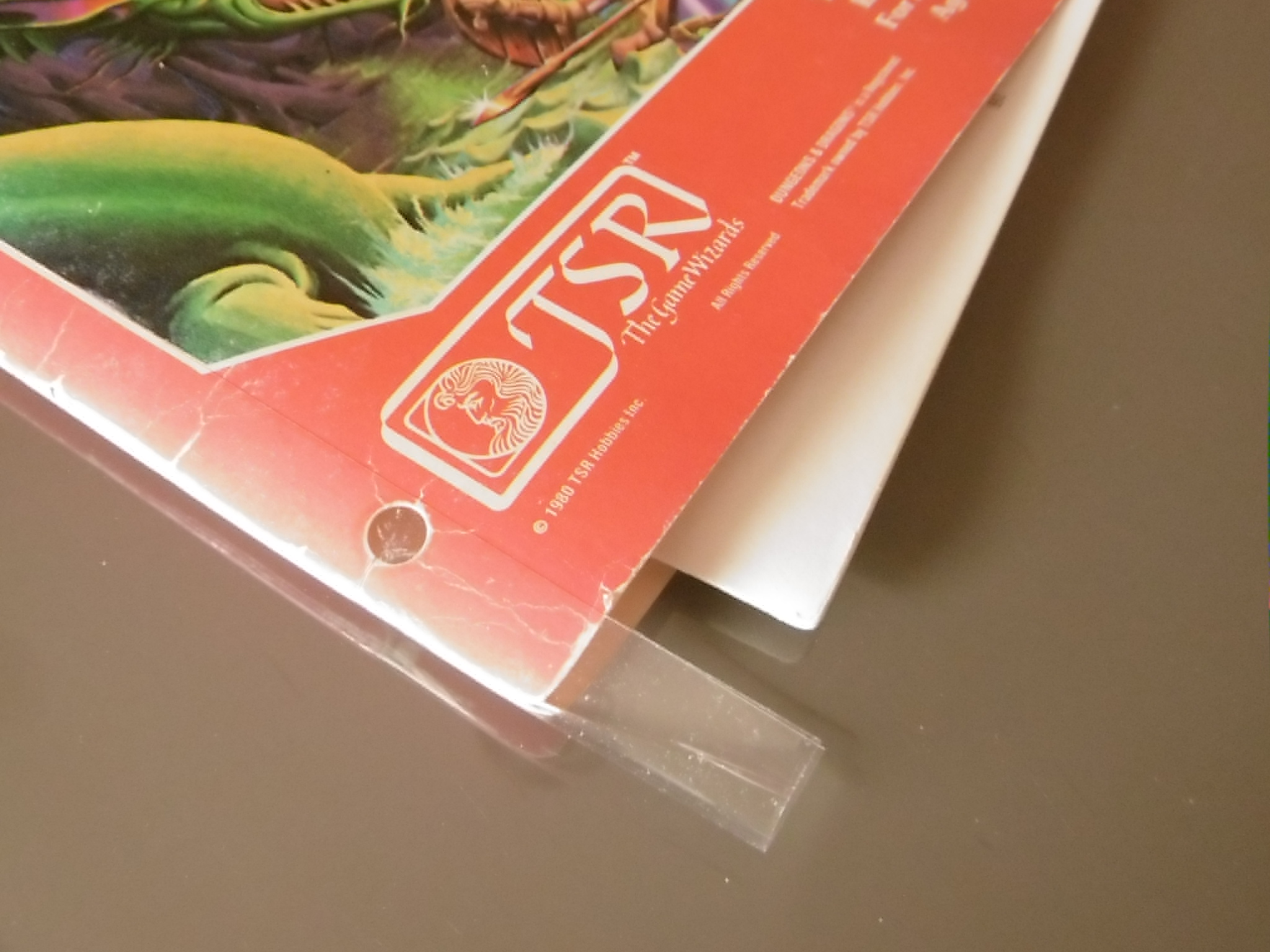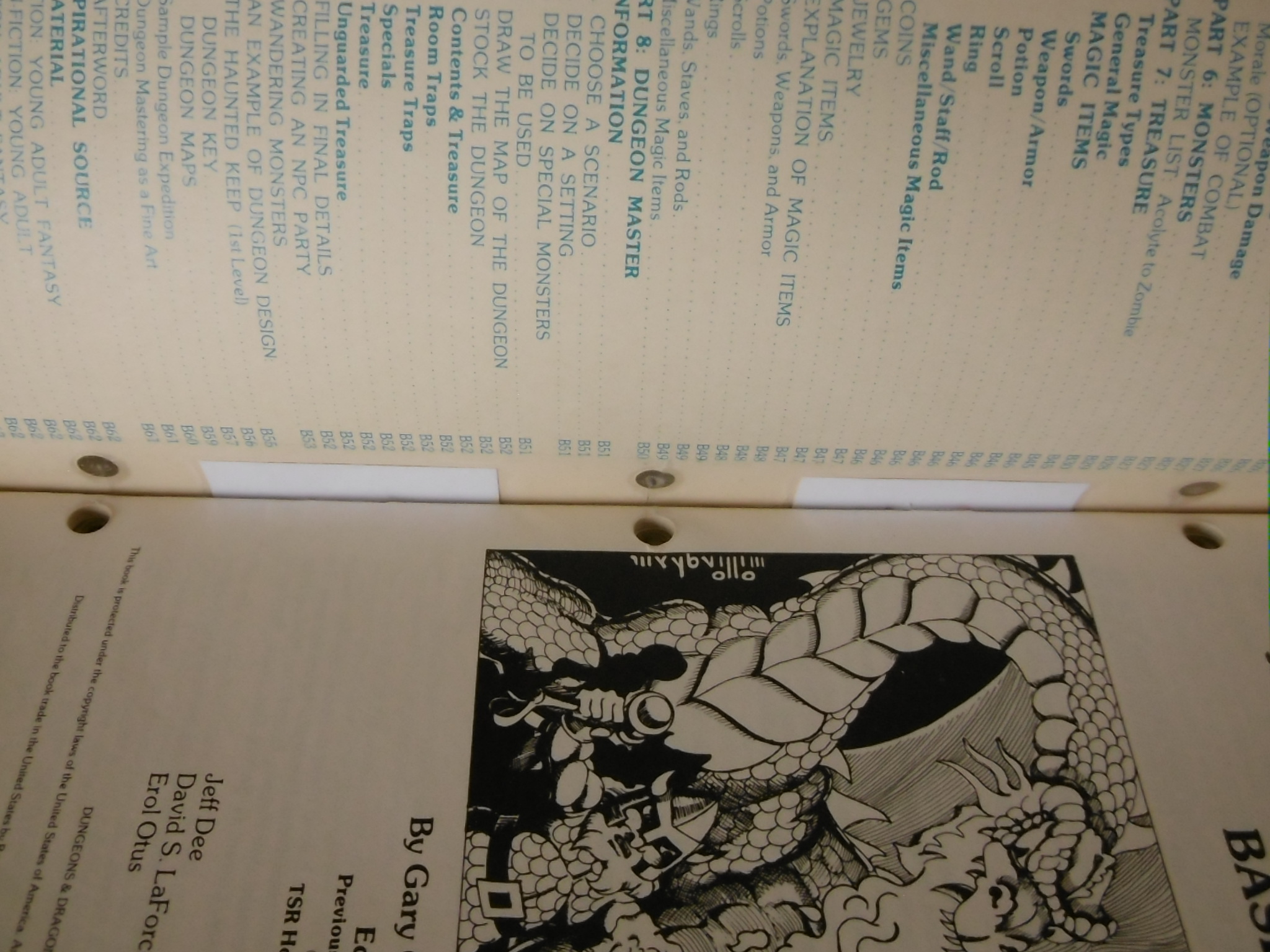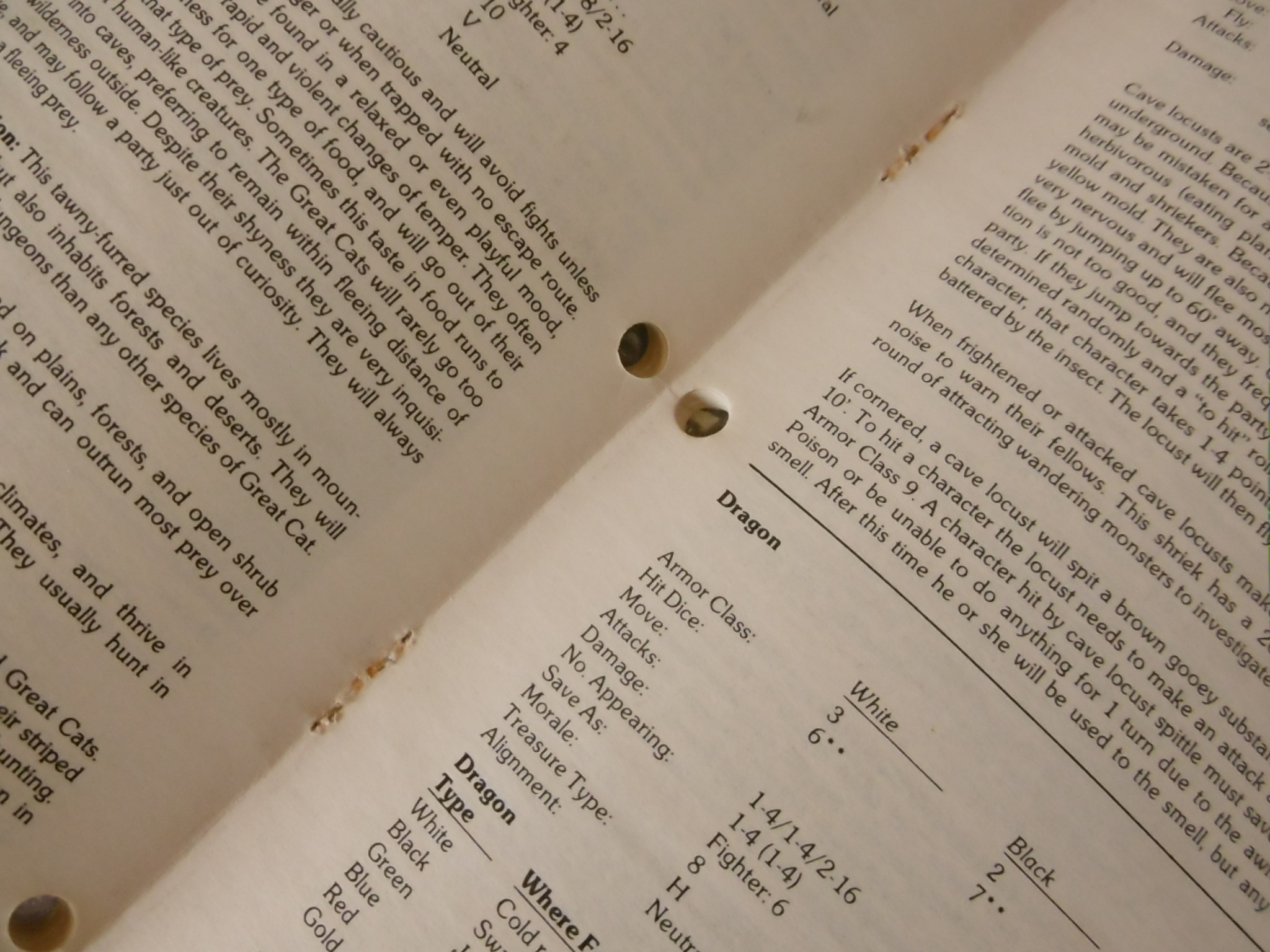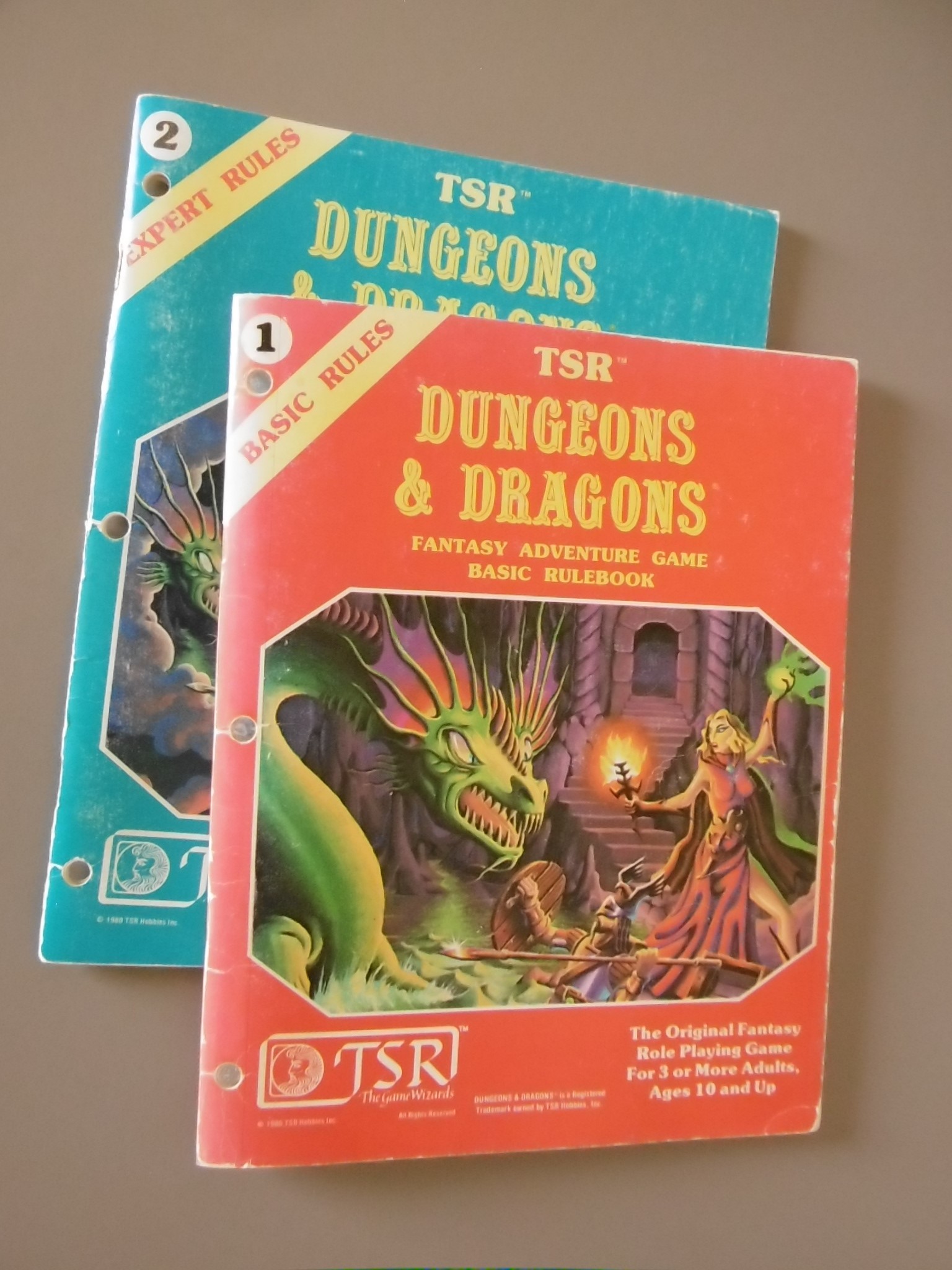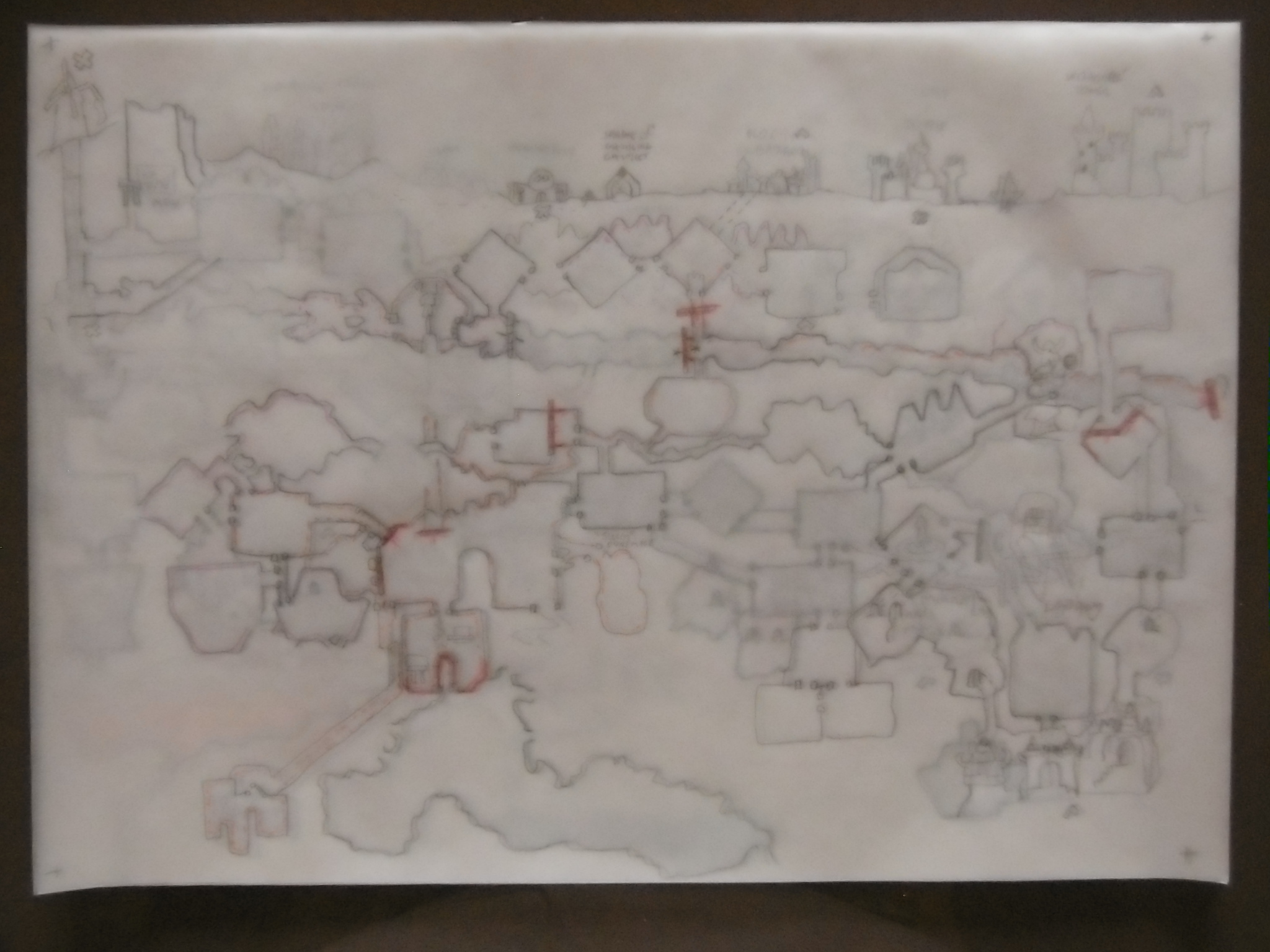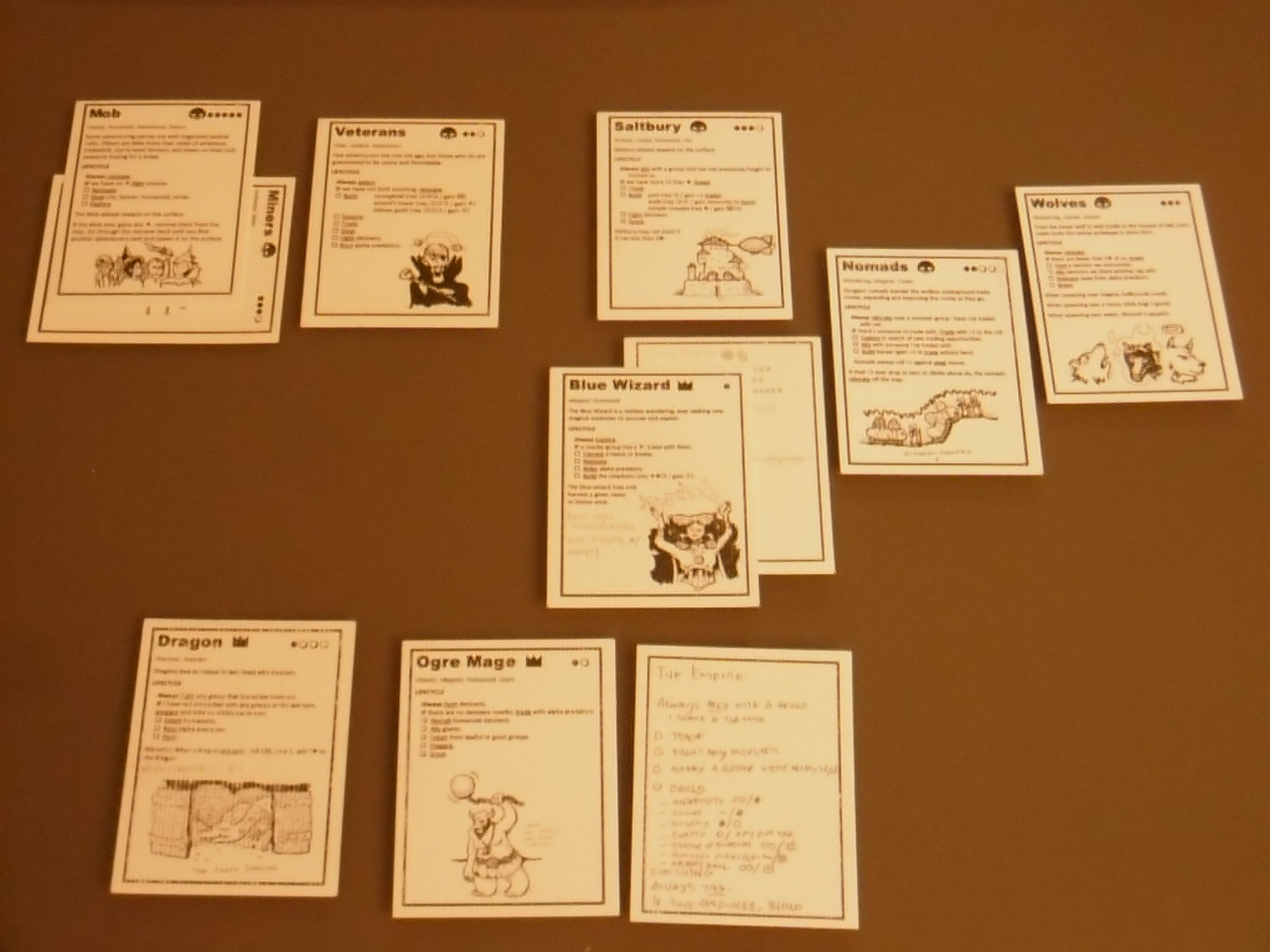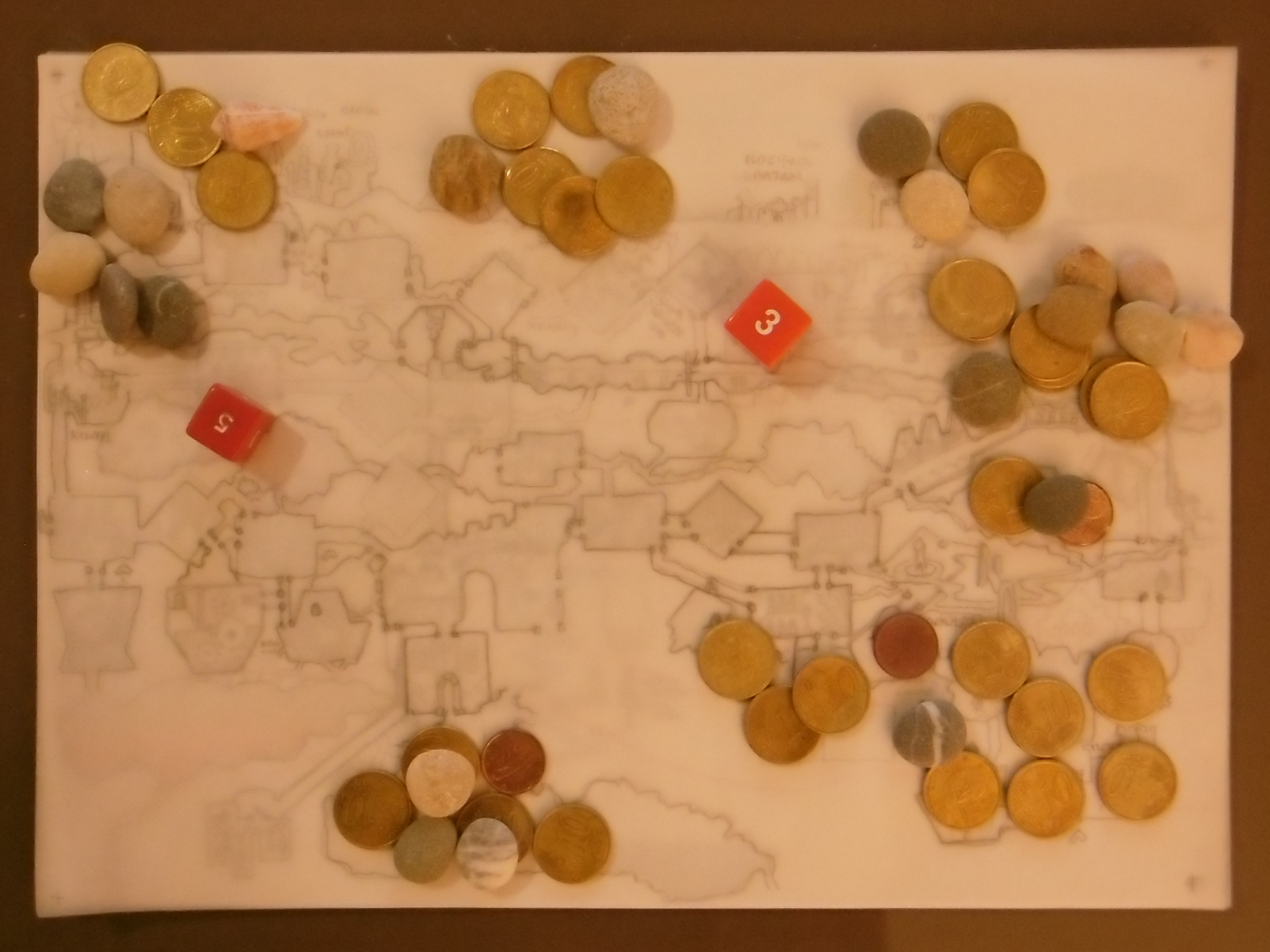Throrgrmir Dungeon Cross-Section
The Wyrm Dawn campaign produced a base map in the Primordial Age plus six transparent overlays in subsequent Ages. I compiled these chronological maps into a composite. In order to clear the clutter, I divided the final cross-section into middle, fore-, and background maps.
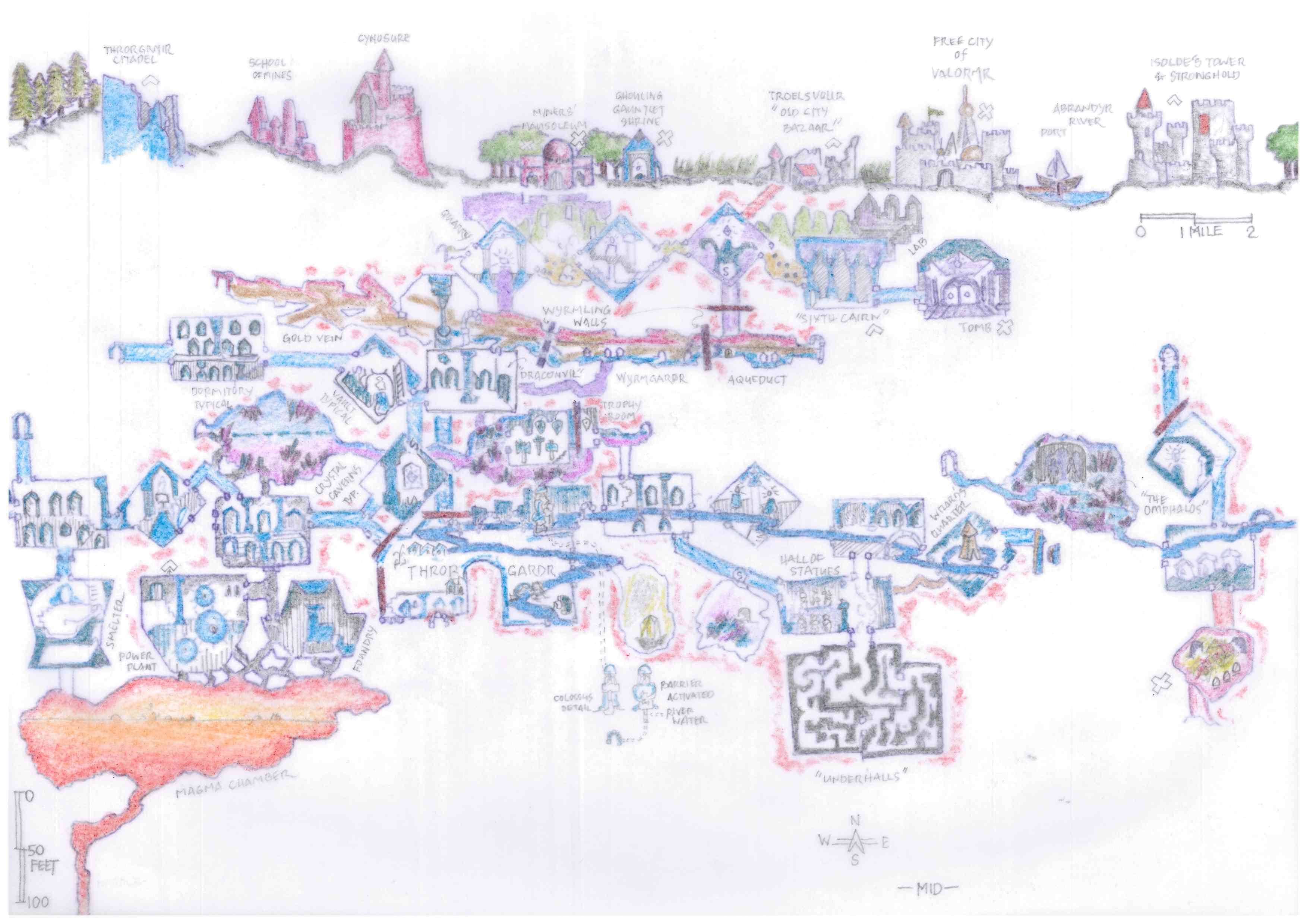
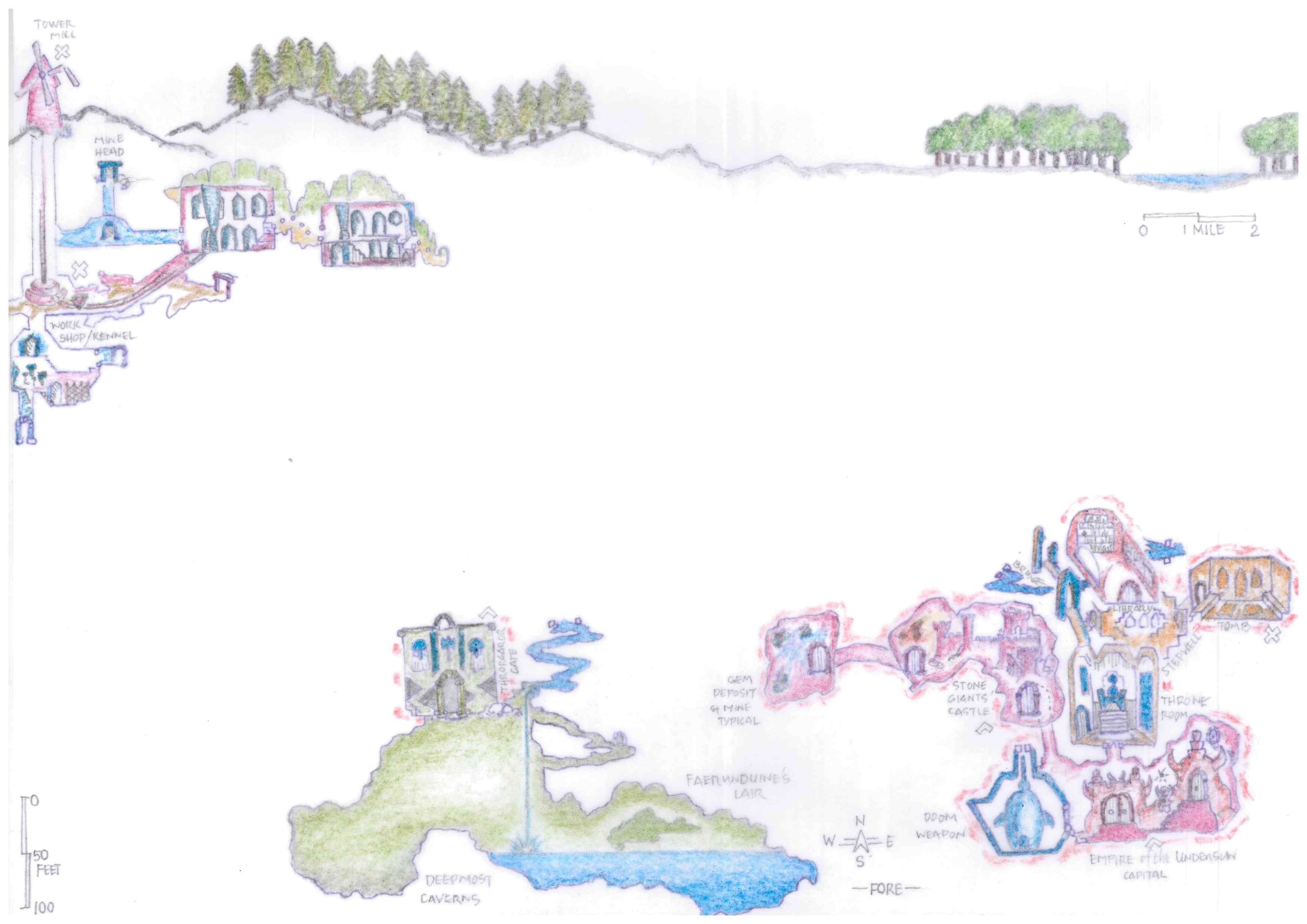
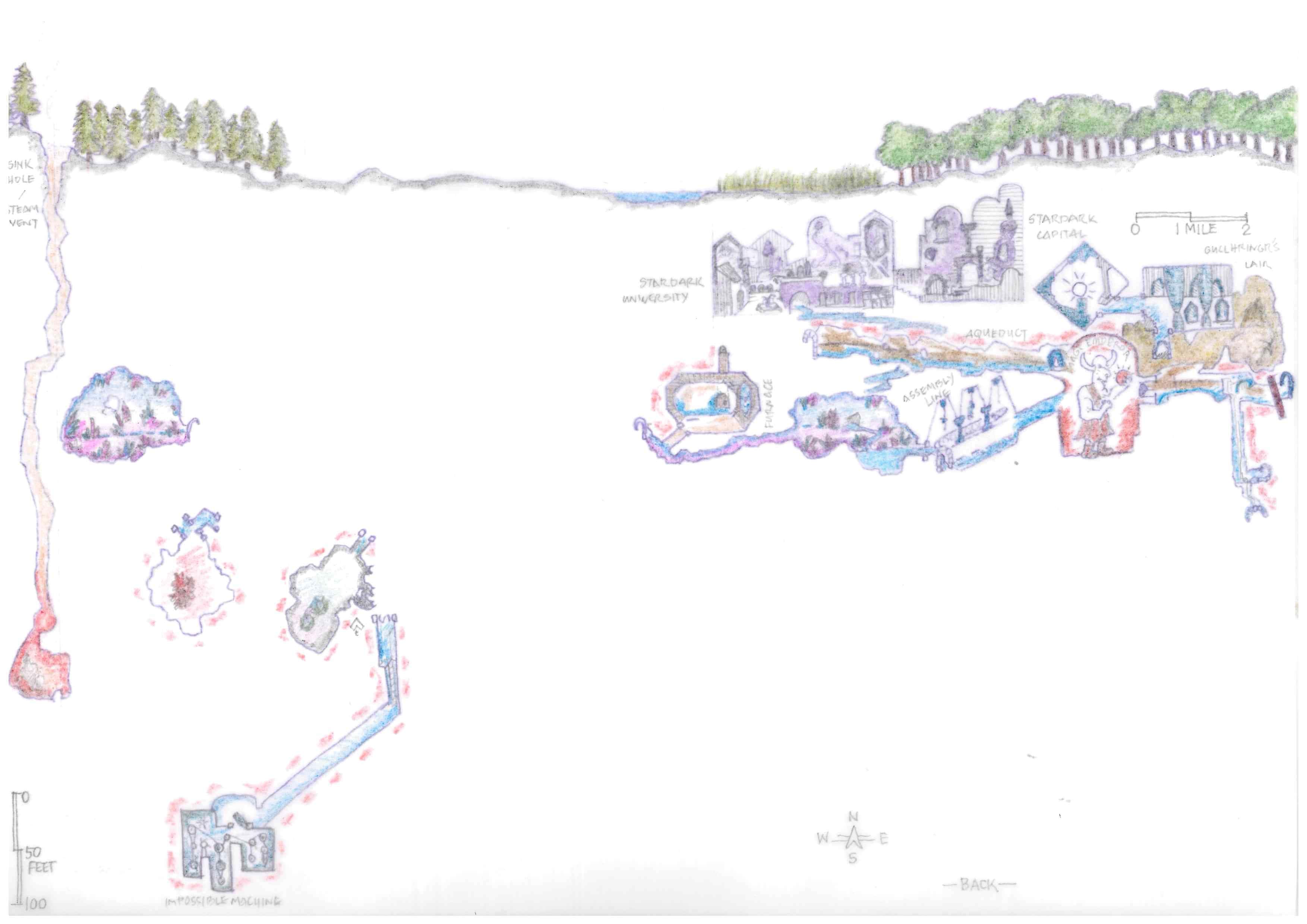
Color Code
Each room is colored to indicate its builder or initial occupant and any group which may have modified it as well as its current occupant. Following are the groups having significant impact on the dungeon’s history.
 Blue Wizard
Blue Wizard
 Faerunduine
Faerunduine
 Gullhringr
Gullhringr
 Kobolds
Kobolds
 Legendary Throrgardr
Legendary Throrgardr
 Magnate
Magnate
 Murtax
Murtax
 Red Ogre
Red Ogre
 Stardark
Stardark
 Stone Giants
Stone Giants
 Throrgrmir Dwarves
Throrgrmir Dwarves
The territory claimed by the Red Ogre is outlined in red. Imperial troops patrol these areas.
A Conundrum of Scale
When thinking of a dungeon—even a “mega-dungeon” in new school parlance—we generally consider a sheet or two of graph paper per level. At 10 or 20 feet per square, the widest dungeon level might be a couple thousand feet in width. Although the levels may be staggered—not stacked one atop another, the entire footprint fits under a surface ruin or a city.
In How to Host a Dungeon, though, you might have one or two cities among many other surface features stretched above the dungeon’s width. Looking at Wyrm Dawn’s middle ground cross-section, for example, we have two cities, Valormr and Troelsvollr, in addition to a tower and stronghold, mausoleum, shrine, the School of Mines, and the Cynosure, which was the Magnate’s capital, with a river running through it all. In my mind’s eye, the surface map spans at least a couple dozen miles. Such a scale makes the dungeon below likewise lengthy and its lowest level sixteen miles deep.
One might solve the conundrum in a number of ways. I choose to keep the horizontal scale and reduce the vertical. Keep in mind that the rooms shown on the cross-section maps serve as icons to mark a general location.
Horizontal Scale
At two miles to the inch, it’s four miles from Valormr to the ruins of Troelsvollr, in which the Old City Bazaar is set up. The nearest known entrance to the dungeon is also in Troelsvollr. Four miles is a fair morning’s travel for merchants by horse-drawn wagon as well as for adventurers on foot.
Vertical Scale
Scaling the East Tower to the cross-section of the Haunted Keep (B58), we find a scale of 100 feet to the inch in Moldvay’s dungeon example. The first dungeon level is 65 feet, the second 120, and the third 280 feet deep.
In the D&D campaign, Wyrm Dawn’s strata become dungeon levels, of which there are eight. This corresponds to the B/X Wandering Monster tables. Surface level ruins, cellars, and basements are considered as the first dungeon level.
Applying 100 feet per inch, our dungeon levels are separated by an average of 100 feet. Though longer flights often separate levels, there may be short flights of stairs up and stairs down within a given dungeon level. So, stairs down don’t always mean tougher monsters. Clever adventurers keep track of their depth to know what level they are on. When in doubt, they might also note, in natural caverns or wherever the geology is exposed, the type and color of the rock. Comparing this information to known strata indicates depth.
